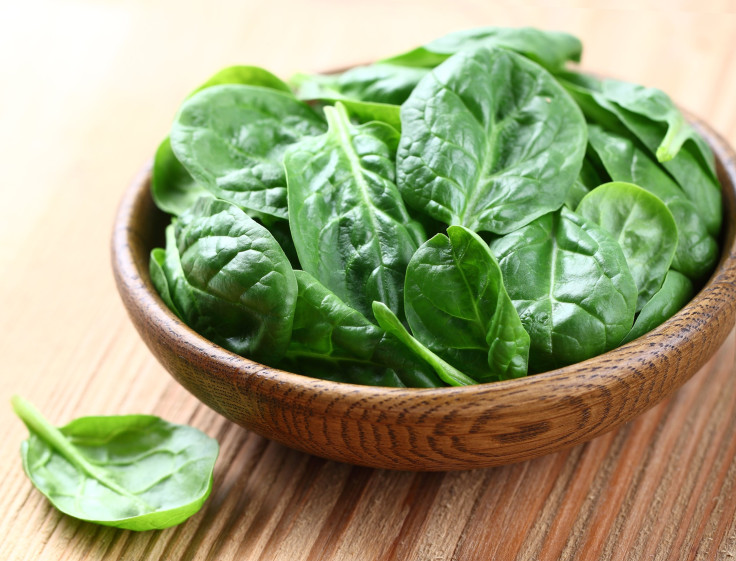Reasons Why You Should Eat Spinach: Thylakoids Make You Feel More Full, Regulate Blood Glucose

Despite kale’s recent popularity as a powerful leafy green, spinach — Popeye’s classic super-food — still remains a top vegetable rich in nutrients. In particular, researchers have discovered that spinach contains thylakoid, a compound common in other green leaves that slows down food digestion.
When prepared properly, spinach has the potential to be an appetite suppressant, with the effect of making people feel fuller and curbing over-eating. Professor Charlotte Erlanson-Albertsson from Lund University in Sweden told UPI News that thylakoids may slow down fat digestion, giving the entire intestine a chance to get involved.
Thylakoids are essentially small pouches located in the chloroplasts of green leaves that have the ability to trigger satiety signals in us. However, eating spinach fresh as is doesn’t necessarily release the thylakoids. First, it must be crushed, filtrated, and centrifuged, which would release the compounds from the cells, turning it into a natural water extract of sorts. It may be time to make some spinach smoothies.
In her research, Erlanson-Albertsson discovered that when humans were given a shot of the spinach water extract in the morning, they experienced less hunger and fewer food cravings throughout the day. The participants who received the shot had higher satiety hormones in their blood, in addition to more stable blood glucose levels.
In another Swedish study conducted by Dr. Rickard Kohnke at the Department of Experimental Medicine at Lund University, eleven health participants were given a high-fat meal. Some of the pesto sandwiches contained thylakoids, and some did not. According to the results, the people who had eaten the pesto sandwiches containing thylakoids showed a reduction in ghrelin, which is an appetite signaling hormone. There was also an increase in leptin, another satiety signal, and lower insulin levels. What this showed was that thylakoids were able to suppress people’s appetites for longer, which could be useful for those who are trying to lose weight while battling constant hunger pangs.
Interestingly enough, though Popeye made healthy foods popular and spinach sales rise, the information spinach PR was based off during the early 1900s wasn’t entirely accurate. In the late 1800s, a German chemist by the name of Erich von Wolf incorrectly wrote down the amount of iron in spinach in his notes. He recorded that spinach had 35 milligrams of iron per 100-gram serving, when it really only has 3.5 milligrams. This tiny decimal misplacement led to the belief that spinach was the top super-food for almost 70 years, and it’s how Popeye’s favorite food came to be.
Even though the amount of iron spinach contains is much lower than previously believed, it’s still highly rich in antioxidants and nutrients. One cup of spinach contains only 27 calories, but it is made up of protein, calcium, iron, magnesium, potassium, vitamin A, and folate. Magnesium assists in maintaining heart rhythm, a solid immune system, and blood pressure along with muscle and nerve function. Spinach has also been shown to lower blood pressure, improve bone health as well as skin and hair.



























